Slovenia
Study in Slovenia
If you decide to study in Slovenia, you will enjoy its perfect location, with part of its territory surrounded by the Alps and part by the sea. Slovenia, a member of the European Union since 2004, is also a member of the Schengen Area and the Eurozone. This situation makes Slovenia an ideal destination for international students who would like to attain a higher education degree while discovering the rest of Europe. In addition, students are exempt from paying tuition fees for full-time study programmes at public institutions and enjoy affordable tuition fees for part-time studies and at private institutions. Slovenia is positioned in the heart of Europe, more or less in the geometrical centre, between Italy, Austria, Hungary and Croatia. It is easily accessible by plane through the main airport in Ljubljana (the capital) or from surrounding airports like Graz, Vienna, Klagenfurt,Venice,Trieste or Zagreb. Cheap transportation Transportation in Slovenia is quite cheap. There are some limitations to that, but with a bit of inside information from locals, you can travel through Slovenia without spending too much money. Intercity bus and train connections might not be the best, to be honest, but a really popular alternative in Slovenia is carpooling. We have a common web page where people announce their car trips from city to city, and you can join them for a little money. Small student groups in lectures Studies are adapted for foreign students. Professors always take additional time for you, and off the record, they are usually less demanding towards foreign students. As said before, studies are in English, and because there are smaller groups of foreign students, students get more individual time from professors and teaching assistants. Slovenia's rich history brings the arts alive. Many students choose Slovenian universities for in-depth study of European culture, including linguistics, history, and the humanities. The University of Ljubjana even operates its own art gallery. Slovenia's cultural diversity makes it an exceptional location to study international relations, foreign policy, and language arts, but science and technology hold a strong place in Slovenian academics, too, where the study of medicine and dentistry is encouraged.

Top Universities in Slovenia
-
FIS Novo mesto

It is the first pillar of the public higher educational system in the region. The study programmes started taking place in the school year 2008/09, when 122 students were registered. Since then we register 250 students each year in our four study programmes from all three study programme cycles.
-
GRM Novo mesto

The school is the successor to the Grm Novo mesto Agricultural School, which was founded in 1886. In 2007, the Agricultural School of Grm was also annexed by the Secondary School for Catering and Tourism Novo mesto, and the Grm Novo mesto – a centre of biotech and tourism was formed.
-
AREMA

AREMA is located in Rogaška Slatina, a town in Slovenia with about 5,000 inhabitants. The
municipality of the same name, which lies in the northeast of the Zgornsotelsko gričevje
along the southeastern border of Slovenia, under the slopes of Boč.
Rogaška Slatina is located in Severno Posotelje, in the eastern and central part of Styria.
Its geographical location is 46º 14′ 50″ north latitude and 15º 35′ 46″ east longitude. It
lies at 228 meters above sea level and is part of the Savinja statistical region. It measures
71.5 km² and ranks 100th among Slovenian municipalities in terms of area. -
University of Ljubljana

The University of Ljubljana, abbreviated UL, is the oldest and largest university in Slovenia. It has approximately 38,000 enrolled students. The university has 23 faculties and three art academies with approximately 4,000 teaching and research staff, assisted by approximately 2,000 technical and administrative staff.
-
University of Maribor

The University of Maribor was established in 1975. With its 17 Faculties, the University Library Maribor and the Student Dormitories, it is the second largest and second oldest university in Slovenia with a long tradition. During these years, it became a successful scientific institution, the primary mission and guiding principle of which is the dissemination and enrichment of knowledge. It is rapidly developing new areas of activity, testing new study methods and seeking new ways of integrating with its environment.
-
IBS- Slovenia

IBS International Business School Ljubljana is modern, open higher education institution developing student-centred learning. IBS will strive to achieve high quality in teaching, scientific research and professional work, continuously improve the educational and academic structure of its staff and the knowledge of its graduates, develop innovative and internationally comparable study and research programmes and international cooperation in both education and research.
-
ERUDIO

ERUDIO Business School currently offers a BEcon degree in Enterpreneurship and International Business, acquired upon completion of our 3 year program.
In the 2015/2016 academic year, our program is entirely part-time.The Enterpreneurship and International Business program was designed in response to the growing demands of the international labor market: addressing new economic demands requires versatile, mobile, and educated college graduates.
The program offered by ERUDIO Business School intends to contribute to a greater accessibility of high quality education. At the ERUDIO Education Center, we believe that high quality education is one of the key factors shaping social progress and economic growth.
-
SASS

School of Advanced Social Studies is a private school, that has been founded in 2006. School offers education on undergraduate, master’s and doctoral level.
Study programmes of the School od Advanced Social Studies provide you with knowledge and competences required to successfully perform professional work, which continually brings new challenges. Irrespective of whether you will work in the public or private sector, or if you become a manager, organizer, analyst, officer, consultant or businessman, in addition to the knowledge and skills acquired during the studies to solve social challenges, you will need courage, enthusiasm and desire to contribute to improving the quality of life of others.
-
University of Nova Gorica

A young and dynamic university located in the border region of western Slovenia is an excellent gateway to quality studies. Modern and practically oriented study programmes, individual approach, excellent opportunities for engaging in research activities, great employment prospects.
Country Facts
Slovenia officially the Republic of Slovenia is a nation state on the Adriatic Sea, bordering Italy to the west, Austria to the north, Croatia to the south and southeast, and Hungary to the northeast. It covers 20,273 square kilometers (7,827 sq mi) and has a population of 2.05 million. It is a parliamentary republic and a member of the European Union and NATO.Its capital and largest city is Ljubljana.
Geography
Slovenia occupies an area about the size of the state of Massachusetts. It is largely a mountainous republic and almost half of the land is forested, with hilly plains spread across the central and eastern regions. Mount Triglav, the highest peak, rises to 9,393 ft (2,864 m).
Climate
Mediterranean climate on the coast, continental climate with mild to hot summers and cold winters in the plateaus and valleys to the east.
Economy
Slovenia today is a developed country that enjoys prosperity and stability as well as a GDP per capita at 88% of the EU27 average.It was the first new member of the European Union to adopt the euro as a currency in January 2007 and it has been a member of the Organisation for Economic Co-operation and Development since 2010.Slovenia has a highly educated workforce, well-developed infrastructure, and is situated at a major transport crossroad. On the other hand, the level of foreign direct investment is one of the lowest and the Slovenian economy has been severely hurt by the European, which started in late 2000s. Almost two thirds of the working population are employed in services.
Religion
Over half the population is Roman Catholic, although there are approximately 38 religious groups or sects officially registered within Slovenia. The Office for Religious Communities maintains a list of active religious communities. There are a large number of Evangelical Lutherans residing near the Hungarian border. Those who call themselves Catholic are very heterogeneous, with very few adhering to all the precepts of the church. In fact, the majority are quite selective in what aspects they follow and often combine their religious beliefs with secular beliefs. Despite the secularism of many people, many public holidays are also religious in nature.
Language
Slovene or Slovenian is an Indo-European language that belongs to the family of South Slavic languages. It is spoken by approximately 2 million speakers worldwide, naturally the majority of whom live in Slovenia. Slovene is one of the few languages to have preserved the dual grammatical number from Proto-Indo-European. Also, Slovene and Slovak are the two modern Slavic languages whose names for themselves literally mean “Slavic”. Slovene is one of the official languages of the European Union.
Although the country is relatively small, there are over 32 different dialects spoken, which can be grouped into 7 larger dialect segments. The diversity in language is due to the influences of neighbouring countries as well as the mountainous nature of the country, which has led to isolated language development.
Visa, Languages, Work
Language
The Slovenian language has played a special role throughout Slovenian history. It is still considered one of the foundations of national identity. In spite of various influences, it has preserved its special linguistic features – the most notable being the archaic dual form. This is the grammatical number used for two people or things in all inflected parts of speech
Work permit
EU citizens are under European law equal to domestic workers or jobseekers in respect of employment and job search. Citizens of EU member states (old and new) and EEA (Norway, Lichtenstein, Iceland) do NOT need a work permit for employment and work in Slovenia. Workers outside of the EU are employed in accordance with the Employment and Work of Aliens Act and ensuing regulations. A work permit is, as a rule, issued on employers` request, so you need to find the employer who is willing to employ you first. An employer will obtain the work permit only under certain conditions. The most important condition is that there are no suitable candidates registered at the Employment Service of Slovenia and that the employment is not causing any disturbances in the Slovenian labour market. Further information about the types of work permits can be found on the Employment Service of Slovenia website where all forms or applications for particular types of work permits are accessible; the website also lists all supporting documents to accompany the application. But, unfortunately, all the relevant information is in Slovene only.
Higher Education System
Education in Slovenia
From primary to secondary schooling and the role of the National Education Institute of the Republic of Slovenia (ZRSŠ) in regulating education programmes,delivery and development. The Slovenian school system has seen a number of changes in recent years, aiming to ensure that as many people as possible realise their right to education,better than before, thus achieving a higher educational level.The education system in Slovenia is almost fully financed from the state budget; a small share of the finance is also contributed from municipal budgets. The educational profile of Slovenia population is improving. The best educated are those employed in the area of education and public administration, while the unemployed are still less educated than those in employment. More than 17% of persons aged 25 to 64 were in some form of education or training in 2005.98% of primary school leavers decide to continue their education,and 84% of secondary school leavers go on to tertiary education.The number of students has more than doubled since 1991.The share of higher education students per thousand inhabitants has risen from 19.1% in 1991 to 41.1% in 2005. Private (single) higher education institutions can be established as universities or single faculties, art academies and professional colleges.Slovenian or foreign natural or legal entities can establish higher education institutions.
Primary Education
In Slovenia, primary and lower secondary education are on a continuum that lasts for 8 years.For the first 4 years, children remain in one classroom with a master teacher.In year 5 they begin switching classrooms, as their base curriculum of native language, mathematics, a foreign language, physical educations and arts,expands to include 2 specialties in 1 each of physics, geography, chemistry, history, biology housekeeping and craft. This completes the cycle of compulsory education.
Secondary Education
There are 3 possibilities to follow at secondary school level. Vocational education lasts 2.5 years leading directly to the labor market.Technical education programs in different themes last for 4, as do the general education courses that lead on to international baccalaureate and perhaps university too.
Vocational Education
European Union membership and increasing globalization are new challenges that Slovenia vocational education training structures must face.Key strategies include improving the quality of trainers,the roles of social partners,and systems for quality control and guidance.
Tertiary Education
Post-secondary technical training takes place at higher vocational colleges, where 2-year programs culminate with a diploma thesis and its defense.There are a variety of universities too, of which the oldest, the University of Ljubljana was founded in 1919 and now has in excess of 65,000 students.
It now boasts 23 faculties and 3 academies distributed throughout the urban area,and is regarded as a pillar of academic stability that successfully survived the military and political turmoil of the 20th Century.
Test Requirements
Undergraduate studies (first cycle)
If you have successfully completed upper secondary studies in one of the signatory countries of the Lisbon Convention, are in possession of a valid school leaving certificate and qualify for higher education studies in your home country,you may also qualify for higher education studies in Slovenia.However, you are requested to prove your level of knowledge of Slovenian and/or English.In some cases, you are also requested to take additional qualifying courses.
Master studies (second cycle)
If you are applying for a master program at university in Slovenia, you are required to be in possession of a relevant bachelor or equivalent degree diploma.
PhD studies (third cycle)
In the event you are applying for doctoral studies at university in Slovenia, you are required to be in possession of a relevant diploma or Master degree program.
Language requirements for studies at universities in Slovenia
Slovenian
Slovenian is the main language of instruction at higher education institutions in Slovenia.Therefore, if you are applying for undergraduate courses,you will be requested to prove your level of command of Slovenian.For some study programs, such as those related to education or languages and communication, you must prove your level of knowledge of Slovenian in the first year of study. For the rest of courses, you can prove your level of command of Slovenian in the second year of studies. In general, you are expected to have a level of command of the Slovenian language corresponding to, at least, B2 in the European Language Passport. If you are applying for graduate studies,you are not required to have knowledge of Slovenian. However, you will need to prove you have knowledge of, at least, one world language.
English
If your study program or course is taught in English, you will be required to prove your level of command of English by presenting the results you received at English courses. Please, always check with your university whether your English studies are sufficient for you to meet this requirement.
Specific admission tests
For some study programs, such as those related to Arts, you will be requested to pass a test of artistic aptitude or psychophysical capacity.Therefore, we recommend you contact the higher education institution you are interested in to learn whether you must pass a specific admission test to be eligible to apply for the study program of your choice.
Minimum grade point requirement to access undergraduate studies (first cycle) in Slovenia
Some study programs may be very competitive and have limited study places. Therefore, applicants are ranked based on their grades from upper secondary school and other university entrance examinations taken at their home countries. Therefore, you may need to meet a minimum grade point or cut-off point in order for you to be eligible to apply for higher education studies in Slovenia.You may use the European grades comparison chart to learn how you would score in Europe.
Accommodation
The finest accommodation in Slovenia is offered by hotels. You can choose between hotels of all ratings, including some with five stars. The price depends on the rating and the range of services offered by the hotel, but in Slovenia there is always something to suit you. Many hotels have conference facilities, and conference tourism is now booming. There are motels along the motorways and busier roads. Hotels in Slovenia are modern and well-kept, and offer varying levels of comfort, facilities and services in keeping with their international rating of one to five stars. Three- and four-star ratings are the most common, but there are more than ten five-star hotels. In recent years four- and five-star hotels have been able to obtain “superior” status.
Price Consideration
All hotels and motels in Slovenia had to undergo a new rating process in 2009 to ensure maximum international comparability. Hotels with one to three stars assessed themselves in line with strict rules, while hotels and motels with higher ratings were appraised by qualified inspectors.
Hotels
In recent years a series of hotels have undergone extensive renovation, and a number have equipped themselves with state-of-the-art conference facilities and seminar rooms. A huge conference centre with numerous halls was opened at Brdo pri Kranju in 2008, when Slovenia held the presidency of the European Union. The centre is part of the state protocol facilities, but is open to the public. You can stay at the nearby hotel in the foothills of the picturesque Kamnik-Savinja Alps. There are motels along the busier roads where travellers can stay. All hotels and motels in Slovenia had to undergo a new rating process in 2009 to ensure maximum international comparability. Hotels with one to three stars assessed themselves in line with strict rules, while hotels and motels with higher ratings were appraised by qualified inspectors.
Holiday House
There are always many moments of pleasant hospitality to be added to your exploration of Slovenia. For that feeling of a home away from home, look to friendly landlords all over the country for private rooms, apartments and holiday homes. And at inns and pensions you will be received like old friends. Staying in private rooms and inns is a good opportunity to get to know the local customs, attractions and cuisine. There is a wide range of private rooms and apartments in Slovenia. The majority are rated at two or three stars, and offer relatively reasonable prices. Prices per person range from €15 to €50 a night. In some areas the local authorities prescribed a surcharge for single nights. Irrespective of private rooms generally being cheaper than hotels, apartment pricing is particularly suited to families or groups of at least four people. Renting out private rooms is a regulated activity in Slovenia, which is used to fund local government, as the price of the room includes a tourist tax, which is set by the municipality in question. Private landlords should therefore issue you a receipt for their accommodation.
History
Slovenia was originally settled by Illyrian and Celtic peoples.It became part of the Roman Empire in the first century B.C.
The Slovenes were a south Slavic group that settled in the region in the 6th century A.D. During the 7th century,the Slavs established the state of Samu, which owed its allegiance to the Avars, who dominated the Hungarian plain until Charlemagne defeated them in the late 8th century.
When the Hungarians were defeated by the Turks in 1526, Hungary accepted Austrian Hapsburg rule in order to escape Turkish domination;the Hapsburg monarchy was the first to include all of the Slovene regions.Thus, Slovenia and Croatia became part of the Austro-Hungarian kingdom when the dual monarchy was established in 1867. Like Croatia and unlike the other Balkan states, it is primarily Roman Catholic.
Following the defeat and collapse of Austria-Hungary in World War I,Slovenia declared its independence.It formally joined with Montenegro,Serbia, and Croatia on Dec. 4, 1918,to form the new nation called the Kingdom of the Serbs, Croats, and Slovenes.The name was later changed to Yugoslavia in 1929.
During World War II, Germany occupied Yugoslavia, and Slovenia was divided among Germany, Italy, and Hungary.For the duration of the war many Slovenes fought a guerrilla war against the Nazis under the leadership of the Croatian-born Communist resistance leader, Marshal Tito. After the final defeat of the Axis powers in 1945,Slovenia was again made into a republic of the newly established Communist nation of Yugoslavia.
The history of Slovenia chronicles the period of the Slovene territory from the 5th century BC to the present times.In the Early Bronze Age, Proto-Illyrian tribes settled an area stretching from present-day Albania to the city of Trieste. Slovenian territory was part of the Roman Empire, and it was devastated by Barbarian incursions in late Antiquity and Early Middle Ages,since the main route from the Pannonian plain to Italy ran through present-day Slovenia. Alpine Slavs, ancestors of modern-day Slovenes settled the area in the late 6th Century A.D. The Holy Roman Empire controlled the land for nearly 1,000 years, and between the mid 14th century and 1918 most of Slovenia was under Habsburg rule. In 1918, Slovenes joined Yugoslavia, while the west of the country was annexed to Italy. Between 1945 and 1990, Slovenia was under Yugoslav Communist regime. The country gained its independence from Yugoslavia in June 1991, and is today a modern state and a member of the European Union and NATO.
Culture
Culture has a special historical and social significance in Slovenia.It was primarily thanks to their culture and their common language of Slovene that the people of Slovenia were able to forge themselves into a nation and survive.Language and culture have for centuries compensated Slovenes for the lack of their own state and political institutions.Slovenia is one of those rare countries,if not the only country in the world, where a day of culture is a national holiday.
Architecture
Architecture is also a vital part of Slovenian culture. The most famous native architect,Joze Plecnik, was a pioneer of modern Slovenian and European architecture of the 20th century.Ljubljana is famed for his work.Many of Plecnik students continued his legacy in the second half of the 20th century.
Music
There are five professional orchestras in Slovenia,and a host of musicians who are famed outside the country. The largest concert halls are at the Cankarjev Dom cultural and conference centre,which holds close to a thousand events each year.
Slovenia own brand of polka music reached its peak in the accordion and ensemble of Slavko Avsenik,while the annual festival in Sticna is a feast of choral singing,and the France Marolt folk group have performed their singing and dancing all over the world.The contemporary thrill of classical music is the territory of the Slovenian Philharmonic,particularly its top musicians,flautist Irena Grafenauer,pianist Dubravka Tomsic and soprano Marjana Lipovsek.Laibach have been a highly influential band in the last few decades in modern alternative music.The ethno-pop of Magnifico has gained a rising international profile.The giants of Slovenian pop music are Vlado Kreslin and Siddharta,while Slovenian DJs are welcome on global dancefloors,most notably DJ Umek.
Government support
The small size of the market means that many artistic and cultural activities in Slovenia enjoy significant support and subsidies from the government (approximately two-thirds of the requisite funding),and funding from local authorities. It is remarkable that less than 10% of cultural activities earnings come from the consumer,i.e.visitors to cultural events. The exception of course is the entertainment industry,notably pop and jazz, where the performers have to rely on their own ingenuity to earn their dues.
Visual arts, architecture and design
Slovenia visual arts, architecture,and design are shaped by a number of architects,designers, painters, sculptors, photographers, graphics artists, as well as comics,illustration and conceptual artists.The most prestigious institutions exhibiting works of Slovene visual artists are the National Gallery of Slovenia and the Museum of Modern Art.
Cities
There are 67 towns in Slovenia. According to the Local Self-Government Act of the Republic of Slovenia, a town is a larger urban settlement with more than 3,000 residents and differing from other settlements in its size,economical structure, population, population density and historical development.A settlement acquires the status of town through a decision of the Government of Slovenia. Until 2005, the decision was made by the National Assembly of Slovenia.
LJUBLJANA
Ljubljana, the capital of Slovenia, is the administrative, political, cultural, economic and traffic centre of the country. The city has all the characteristics of modern and highly developed country centres, but has still maintained the kindness and ease of a small town. Through the centuries Ljubljana developed and expanded under the castle hill on the left and right bank of Ljubljanica River. The oldest marks of settlement in this area are from the Bronze Age.
MARIBOR
Maribor is the second biggest city in Slovenia and as such also the centre of the North-East part of Slovenia. Even from the Middle Ages onwards it has been known for producing wine,which is why it is today surrounded by vineyards,and the connection with viticulture is confirmed by the 400-year-old vine the oldest preserved vine in the world. In Maribor there is also one of the largest classic wine cellars in the Central Europe, with its halls stretching three kilometres under the old town centre.
BLED
Surrounded by steep hills it creates an idyllic mountain spot.In the summer it is a place to swim and enjoy the sun, and in the winter a place to relax after skiing. All year long you can choose from a variety of sport activities,and all those who would like to get your special wish come true can go to the island and ring the bell of wishes in the church. Above the lake rises the three-peaked Triglav, the highest mountain in Slovenia. We are very proud of it, and an unwritten rule says that every true Slovene has to climb Triglav at least once in his life.
PIRAN
Piran is a very special,precious city. It is the best preserved cultural monument of Slovenian Istria and the closest neighbour of Portorož, the luxurious city of flowers.Each time one looks at Piran from a distance or from the air, one is overcome by feeling of surprise.
IZOLA
The old Mediterranean town of Izola lies on the south-west shore of the Gulf of Trieste, where the genuine traditions of fishing and winemaking, mysterious traces of the past, and the welcoming character of the locals merge together to form an unforgettable mosaic of experiences.
KOPER
Of all Slovenian coastal towns,Koper underwent the greatest number of changes and progressed a long way from the story Goat Island to the economic centre of Slovenian Istra. Its modern image deep historic roots and it is quite an art to bring together all these influences.
CELJE
Celje, which lies by the peaceful Savinja river,is the capital of the Savinja region,named after the river. The town prides itself with the legacy of the Counts of Celje, the famous aristocratic and ruling family,the last great Slovene dynasty.
PORTOROZ
The city of Portoroz attracts people from all over the world almost all parts of the year.It is a popular congress centre by the coast, where you can treat yourself in the luxury hotels with a vast offer of restaurants and events.
POSTOJNA
The city of Postojna is the centre of the Inner Carniola region, which is most famous for its Dinaric world.Plenty of rain and snow falls on the limestone and dolomite surface of the mountains and plateau of that region that has turned to karst, but all that water disappear in the ground and reappears on the borders of the lower Karst fields and valleys.
MURSKA SOBOTA
The Prekmurje region with the centre of Murska Sobota is located in the corner between Austria and Hungary.The region can also be called the Slovene gate into the Pannonian Plain, and for that reason it is rich with endless cornfields,long wayside villages and storks which return to the Mura River every year.
Cost of Living
The cost of living in Slovenia should only be used as a guide (prices are per month). ACCOMMODATION 150€-250€ (private accommodation) 80€ – 160€ (dormitory) STUDY MATERIAL mostly photocopies (0,05€/copy) FOOD 100€ (subsidized meals: average 3€/meal) CITY TRANSPORTATION 20€ /month (Urbana bus card); up to 30 € for a used bicycle TOTAL App. from 250 – 500€ per month. The cost of living for a foreign student in Slovenia could be less then in his country of origin and depends on the options he takes
Cost Of Accommodation in Slovenia
Accommodation is about 100-150 €/month in the dormitories provided by the universities,but could be of about 200-300 €/month for private rented flats.Costs of meals on the universities facilities are about 3-5 €/meal,that means 100-150 €/month. Urban public transport card is about 20 €/month. The ERASMUS subsistence grant for Slovenia is about €500 per month, which is enough to successfully cover the costs of living. Books and study materials are provided with special prices and discounts.
ACCOMODATION 150€-250€ (private accommodation) 80€ – 160€ (dormitory) STUDY MATERIAL mostly photocopies (0, 05€/copy) FOOD100€ (subsidized meals: average 3€/meal) CITY TRANSPORTATION 20€ /month (Urbana bus card); up to 30 € for a used bicycle TOTAL App. from 250 – 500€ per month
Transport costs
Urban travel is generally provided by buses,trams and metro. Bikes are good options for students,low costs and fast in cloudy traffic hours.Interurban travel by train or cars benefits by good networks that reach all the places around the country. Costs are affordable for all categories. Driving a car requests a valid European or international driving license.
Health and Medical
The healthcare system in Slovenia.
Health care in Slovenia is a public service provided through the public health service network. This network also includes, on an equal basis, other institutions, private physicians and other private service providers on the basis of concessions. With relatively limited public funds available for this purpose, the level of health care in Slovenia is entirely comparable with the level of health care in the advanced countries of Europe.In Slovenia the system of health insurance is divided into compulsory health insurance, voluntary health insurance for additional coverage, and insurance for services that are not a constituent part of compulsory insurance.Primary health care services are organised locally, such that they are equally accessible to all people without discrimination. Everyone must be assured continuously accessible urgent medical attention and emergency services. Compulsory health insurance is mandatory for all citizens with permanent residence in Slovenia, whereby everyone is bound to pay contributions under the solidarity principle. Compulsory insurance does not, however, ensure the coverage of all costs that arise in treatment. Complete coverage of costs is provided only for children,schoolchildren and for certain illnesses and conditions. For the provision of voluntary health insurance; in 1999 a new Mutual Health Insurance organization (Vzajemna zdravstvena zavarovalnica) was established.It is owned by its members – insured persons – and operates according to the principles of mutuality and non-profit status.Voluntary health insurance can be offered by other insurance companies, provided that it is organized as long-term insurance, that they insure everybody, irrespective of their state of health,and that the insurance company makes no distinctions between those insured.
Treatment costs.
Enticing offers of cheaper prices, shorter flights and cutting edge technology are the parameters that increase the interest for medical tourism around the globe.At Medical Tourism DMC quality comes first.The price of medical services, beauty treatments and relaxation programs depends on the individual specificity and the desire for accompanying activities in Slovenia.For this reason,we consider each inquiry individually with regards to the privacy of every individual.If you would like further information,a quotation or an indicative cost for treatments,complete our enquiry form.We will forward your request to selected providers of healthcare services in Slovenia.
Natural therapeutic factors.
The emphasis on a healthy lifestyle at Slovenia natural spas is based on a centuries-long tradition of thermal treatments and experience in the fields of balneology,climatology, and thalassotherapy.Their holistic approach to treating guests revives several long forgotten forms of treatment and respects the experience of traditional medicine from distant countries.Excavations from the period of the Roman Empire bear witness to Slovenia rich and diverse culture of thermal baths, documents from as early as 1147 describe the use of thermal springs, and research has demonstrated the healing qualities of our mineral waters that have been appreciated for more than four centuries.Modern natural spa tourist centers have become one of the most outstanding elements of Slovenia tourist offer. Their increasing focus on developing a broader tourist and recreation offer has led to their redefinition as thermal spas and wellness centers.Numerous innovations in their offer reflect their dynamism and their openness to adapting to new trends in spa and leisure time tourism. At the same time, they have welcomed and incorporated ideas about health resorts for the healthy, about creating entertaining water recreation parks for tourists, and about combining centuries of tradition and experience in balneology with some lesser known Eastern philosophies and methods of treatment that add additional charm and attractiveness to their offer.
Transportation
It is simple to travel around Slovenia by any means of transport. It is obviously easiest to use your own transport, but if you have none you can rely on public transport and thus help to protect the environment. In any case it is worth checking what should be done to make your travel around Slovenia as efficient as possible. In this way you can also adjust the speed of your travel by road, rail, air or sea according to your requirements.
Public Transport in Slovenia
You can travel around Slovenia by public bus or train. Train travel is mostly on local trains, and on some routes there are also Eurocity and Intercity (ICS) trains, which provide the fastest means of train travel. Connections between larger cities and towns are regular and quite frequent and the trains are comfortable and air-conditioned. The main train station in Ljubljana is located very near the centre of the city. The transportation of bicycles is possible on trains and on the route Bohinjska Bistrica – Most na Soci, cars can also be transported.Besides local connections, international connections are also available. Ljubljana is directly connected with Vienna, Graz, Villach and Salzburg in Austria; Sofia in Bulgaria; Prague in the Czech Republic; Solun (Thessaloniki) in Greece; Zagreb, Pula, Opatia and Rijeka in Croatia; Venice in Italy; Budapest in Hungary; Skopje in Macedonia; Munich in Germany; Belgrade in Serbia; and Zurich in Switzerland.The main bus station in Ljubljana is located directly across the road from the train station. Bus connections are frequent and available to distant locations throughout the country.In larger cities and towns the hire of bicycles is also available, with which, either with a guide or alone, you can uncover the many interesting corners of our country.
Buses
You can reach Slovenia by coach and bus from a number of European cities. There are even direct coach services from cities thousands of kilometres away, in Sweden and Denmark for example. Most international coaches stop in Ljubljana. Coaches travel through here from Italy, Austria, Germany, Serbia, Poland, Croatia, Bosnia-Herzegovina, Bulgaria, Denmark, Sweden, Kosovo and Macedonia.The majority of towns and also rural areas can be reached by bus.When taking routes along local roads, the driver can drop you off at a bus stop in any village or town. Bus tickets can be bought from the driver, while tickets for a specific date can be bought at major bus stations.Since 1 May 2004,when Slovenia joined the European Union, the new door has opened for the country. On the daily base Slovenian innovations are ready to meet and change the world.
Slovenian Railways
Slovenian Railways is the sole rail operator in Slovenia, and all its timetables and price lists can be found on its website.Tickets can be bought at any railway station, or on the train. Trains in Slovenia generally run on time. Direct express trains from neighbouring countries and many other parts of Europe offer you an easy way to get to Slovenia You can also travel overnight on trains with sleeper cars.Travelling by train is one of the most comfortable ways to travel. Slovenia is part of the Eurail Global Pass system,which means that you can use this pass to travel in Slovenia
Tuition Costs
Full-time EU students as well as students from outside Europe whose countries have reciprocal agreements with Slovenia, are exempted from paying tuition fees at public higher education institutions in Slovenia.However,you will have to pay a small but compulsory registration fee of approximately EUR 30 per year.Part-time students as well as students at private higher education institutions have to pay tuition fees.In general,tuition fees vary from approximately EUR 1500€ to over EUR 10000 per year depending on the study program.
Tuition for part-time undergraduate study All foreign citizens pay tuition fees.Fees for part-time study may be paid in installments.Faculties do not pay for the student basic health insurance out of tuition fees for part-time study. Tuition fees for specialist and master studies
• Up to $2,250 in the tolar equivalent for one year in social science study programmes;
• Up to $3,000 in the tolar equivalent for one year in natural science,technical and arts study programmes.
Tuition for postgraduate study can also be paid in installments by agreement with the Faculty.Faculties do not pay for foreign students basic health insurance out of tuition fees for part-time study.Tuition fees for doctoral studies
• up to $2,250 in the tolar equivalent for one year in social science study programmes, after completion of a master degree,or up to $4,500 in the tolar equivalent for full doctoral studies;
• Up to $3,000 in the tolar equivalent for one year in natural science, technical and arts study programmes after completion of a master degree, or up to $6,000 in the tolar equivalent for full doctoral studies.
For citizens of European Union countries and students from countries with which Slovenia has a relevant agreement, the postgraduate study tuition fees are the same as those for Slovenian citizens. Once again, out of this tuition fee the faculty does not pay for basic health insurance. By agreement with the faculty or academy, students can pay tuition fees in installments.
Under Graduate Degree
Slovenia strongly supports the idea of construction of a genuine European area of knowledge and strives to implement measures supporting equal opportunities, school success, mobility in general, higher education and vocational education and training, language learning, safety at school, non-discrimination, educational technologies and distance education, academic and professional recognition of qualifications, educational statistics, overall development of general education and vocational training, development of undergraduate and the modernisation of postgraduate studies.
What is Meant by Undergraduate Degree
An Undergraduate degree is a colloquial term for an academic degree taken by a person who has completed undergraduate courses.It is usually offered at an institution of higher education,such as a university.The most common type of this degree is the bachelor degree,which typically takes at least three or four years to complete.A bachelor degree is usually earned for an undergraduate course of study that nominally requires three to five years of study.In some cases,it may also be the name of a second graduate degree,such as a Bachelor of Laws (LL.B.),Bachelor of Education (B.Ed.), Bachelor of Civil Law,the Bachelor of Music,the Bachelor of Philosophy,or the Bachelor of Sacred Theology,degree which in some countries are only offered after a first graduate/bachelor degree.
Undergraduate Education
Undergraduate Education is the post-secondary education previous to the postgraduate education. It includes all the academic programs up to the level of a bachelor degree. For example,in the United States an entry level university student is known as an undergraduate,while students of higher degrees are known as graduates.In some other educational systems and subjects, undergraduate education is post-secondary education up to the level of a master degree; this is the case for some science courses in Britain and some medicine courses in Europe.
Undergraduate studies (first cycle)
If you have successfully completed upper secondary studies in one of the signatory countries of the Lisbon Convention, are in possession of a valid school leaving certificate and qualify for higher education studies in your home country, you may also qualify for higher education studies in Slovenia. However, you are requested to prove your level of knowledge of Slovenian and/or English. In some cases, you are also requested to take additional qualifying courses.
General application requirements
Foreign citizens and Slovenians without Slovenian citizenship who completed secondary school abroad may enrol in Bachelor studies if they meet the following requirements:
• completed four-year secondary school;
• completed procedure for the recognition of foreign secondary education certificates;
• successful result on required tests, if applicable;
• Knowledge of the Slovenian language.
Copies of certificates and other documents which candidates must send to the Higher Education Application Information Service of the chosen Slovenian university:
• notarized final certificate of a four year secondary school (or matura certificate);
• a secondary school diploma;
• notarised transcripts for the last two years of completed secondary school recording academic performance;
• personal identity cards or certificates of citizenship;
• Certificate indicating that the candidate has passed the Examination in Intermediate Level Slovenian.
Types of Undergraduate Degrees Available in Slovenia
There are many different undergraduate degrees that you will be able to earn while in Slovenia. Undergraduate degrees are classified according to the following fields of Knowledge:
Arts and Humanities
Sciences
Health Sciences
Social Science and Law
Engineering and Architecture
Business Law
Post Graduate Degree
For entry to most Postgraduate Taught or Research degrees,the minimum requirement is a good undergraduate degree from a recognized university. Students with a Slovenian Diplom would normally be asked to achieve a grade of 7.5/10 or 4/5 or better.However,each application is considered individually and you are advised to contact the College Office for further information on admission.The adoption of the Bologna system also supports the academic and professional recognition of qualifications, and the overall development of modern education methods and internationally relevant undergraduate and postgraduate studies. All postgraduate study programmes are evaluated with ECTS points. At graduation, postgraduate students receive a diploma supplement as diploma component part, used by students as their study report and study achievements, when searching for employment. A diploma supplement is issued in Slovene and in one of official EU languages.
General application requirements
Foreign citizens and Slovenians without Slovenian citizenship who completed secondary school abroad may enrol in Bachelor studies if they meet the following requirements:
• completed four-year secondary school;
• completed procedure for the recognition of foreign secondary education certificates;
• • successful result on required tests,if applicable;
• • Knowledge of the Slovenian language.
Copies of certificates and other documents which candidates must send to the Higher Education Application Information Service of the chosen Slovenian university:
• notarized final certificate of a four year secondary school (or matura certificate);
• a secondary school diploma;
• notarised transcripts for the last two years of completed secondary school recording academic performance;
• personal identity cards or certificates of citizenship.
• Certificate indicating that the candidate has passed the Examination in Intermediate Level Slovenian.
Scholarships Programs
Slovenia scholarships for foreign students.The majority of scholarships are reserved for the citizens of the countries with which a bilateral agreement/programme on scholarship exchanges (quotas) has been signed with: Belgium, Hungary, Italy, Israel, Japan, Mexico, Poland, PR of China, Russian Federation, Slovakia, Switzerland and Turkey.A limited number of scholarship months is reserved also for the candidates from Bosnia and Herzegovina, FYROM,Montenegro and Serbia.Majority of the applications are admitted for short time study stay or research visits by doctoral students/candidates (i.e. they either attend non-degree courses of their choice, or pursue an independent research activity at the host institutions, depending on their qualifications and preferences).In compliance with the applicable legal regulations,decisions on admission to research or study stays are taken by the institutions of higher education.Applicants are therefore obliged to contact the selected university directly and request a Letter of Acceptance from the relevant department.Applicants are requested to point out to the selected university that they are applying for a scholarship award under the bilateral agreement.The age limit of the applicants for study stays is 26 years (the applicant may not complete 26 years of age before the end of the scholarship period) and 30 years for research visit.Exceptions to these regulations are possible only if so defined in the concerned bilateral agreement.The applicants for study stays should be proficient in the Slovene language, unless the working language is agreed upon with the mentor/supervisor.
Professional scholarships
Professional scholarships, normally offered by various companies.For the whole of Slovenia the tender for these scholarships is normally published in March in the special editions of the National Office for Employment.Candidates submit their applications directly to the companies offering the scholarships.We would recommend that candidates contact the human resources department of the company offering the scholarship they are interested in, and obtain detailed information on the application dates and documents required for application.
The national and ZOIS scholarships
Zois scholarships are state merit scholarships, first established in 1986. The basic guideline of the system was detection of gifted children and promotion of development of their careers so they would achieve the highest level of education and thus providing the society with the best human potential.
Foreign students that would be coming to Slovenia under a special bilateral/multilateral agreement or reciprocity exists between Slovenia and their country of origin in terms of scholarships could be eligible for Zois scholarship provided they meet all general and special conditions and placed high enough in ranking.
Scholarships offered by various foundations
Scholarships offered by various foundations, which are private or state institutions. The aim of the foundations is to financially support successful candidates, and the criteria for obtaining the scholarships vary from the social, regional to political ones.Some of the foundations include The Foundation of dr Anton Trstenjak,Foundation Ana, Slovene scientific foundation, Educational foundation of Pomurje region, Foundation Ajda at Peasants Society,Student development fund of the Faculty of Economics, etc.The tenders for scholarships are normally published in the newspapers and on the internet
Scholarship Programs
For the academic year 2013/2014, the scholarship comprise of:
286 EUR per month and its amount is periodically reviewed and adjusted.
Free accommodation in the facilities of the Student Centre of the Universities (paid for by the Ministry directly to provider).Basic medical insurance for non-EU applicants if there is no bilateral agreement on health Insurance between Slovenia and the applicant home country (paid for by the Ministry directly to provider).The majority of scholarships are reserved for the citizens of the countries with which a bilateral agreement/programme on scholarship exchanges (quotas) has been signed with: Belgium A limited number of scholarship months is reserved also for the candidates from Bosnia and Herzegovina, Former Yugoslavian Republic of Macedonia, Montenegro and Serbia.
Jobs
Working in Slovenia
Nationals of all EU and EEA (European Economic Area) Member States have free access to the labour market in Slovenia. If you are a citizen of EU or EEA member states,work permit to enter the Slovenian labour market is not required, and you can apply for job vacancies under equal conditions.The employer is obligated to register you into the obligatory pension, invalidity,health and unemployment insurance within 8 days of the date of signing the employment contract.If you are posted to work in Slovenia by a foreign employer,the later is obligated (based on working contract concluded in your country) to ensure you minimal working and employment conditions compatible with Slovenian regulations. If you are a non EU citizen, you may gain employment in Slovenia only on the basis of a work permit, which is issued in accordance with Slovenian national legislation. Work or employment for foreigners in Slovenia is only possible if the foreigner is in possession of a work permit.
Job vacancies
Job vacancies are published on the Employment Service of Slovenia and EURES web-sites. They are also published in the daily newspapers (Delo, Dnevnik, Večer, Primorske novice, Gorenjski glas, Dolenjski glas…).Job brokering is performed through the Employment Service of Slovenia or private employment agencies owning a concession issued by the Ministry of Labour,Family and Social Affairs. Those agencies are not allowed to demand any payment from job seekers for finding employment.
Work permit
EU citizens are under European law equal to domestic workers or jobseekers in respect of employment and job search. Citizens of EU member states (old and new) and EEA (Norway, Lichtenstein, Iceland) do NOT need a work permit for employment and work in Slovenia.Workers outside of the EU are employed in accordance with the Employment and Work of Aliens Act and ensuing regulations.A work permit is, as a rule, issued on employers request, so you need to find the employer who is willing to employ you first. An employer will obtain the work permit only under certain conditions. The most important condition is that there are no suitable candidates registered at the Employment Service of Slovenia and that the employment is not causing any disturbances in the Slovenian labour market. Further information about the types of work permits can be found on the Employment Service of Slovenia website where all forms or applications for particular types of work permits are accessible;the website also lists all supporting documents to accompany the application. But,unfortunately,all the relevant information is in Slovene only.
Residence permit
If you intend to stay in Slovenia for a period of more than three months, a residence permit is needed. An application for a residence permit can be made at the local Administrative unit with valid passport, or identity card. In the case of planned employment,you must submit confirmation from your employer that he will employ you or proof of employment (an employment contract) and, in the case of study, self-employment or retirement,evidence thereof.You must also provide proof that you have a secure means of subsistence and compulsory health insurance.
Recognition of Education and Qualifications
Before deciding to work in Slovenia, it is advisable to find out if your profession is regulated in Slovenia. If you want to pursue the regulated profession (doctor, nurse, pharmacist, teacher…), the standard application for the recognition of qualifications needs to be submitted to the Ministry of Labour, Family and Social Affairs. If you have gained a particular education abroad and would like to have it recognised send your application to the Ministry of Education, Science and Sport.
Self-Employment
An economic activity may be performed in Slovenia by a natural or legal entity taking one of a number of legal organisational forms. Natural entities perform business operations as sole traders. For legal entities, several forms of company are recognised in Slovenia. Entrepreneurs may start to operate their business once they are registered as an economic subject and fulfil the special conditions which differ depending on their main business. This means that an entrepreneur may start up a craft establishment upon obtaining a craft licence.
- UK

- USA

- Canada

- Australia

- New Zealand

- Germany

- France
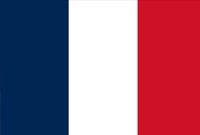
- Italy

- Sweden

- Finland
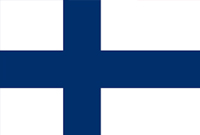
- Georgia
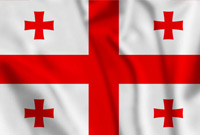
- Austria

- Slovenia

- Spain

- Belgium

- Bulgaria

- Czech Republic

- Croatia

- Denmark

- Estonia

- Greece

- Hungary

- Iceland

- Latvia

- Liechtenstein
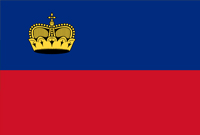
- Lithuania

- Luxembourg
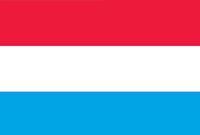
- Malta

- Netherland

- Norway

- Poland

- Portugal

- Romania
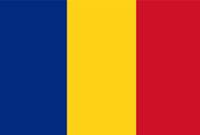
- Slovakia

- Switzerland

- Serbia
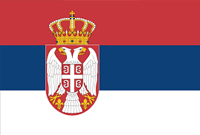
- Ireland
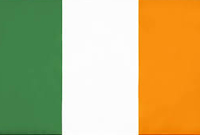
- Albania

- Moldova
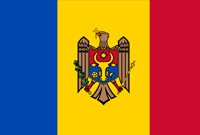
- Ukraine

- Belarus

- Russia

- Cyprus

- Monaco

- Bosnia

- Andorra

- Montenegro

- More Contries

Why Choose Us?

Complete Assistant with Quality Service

20 Years of Experience

India's most certified Agency

Study for Free or With Affordable Tuition Fee
Do you have questions or want more information?

